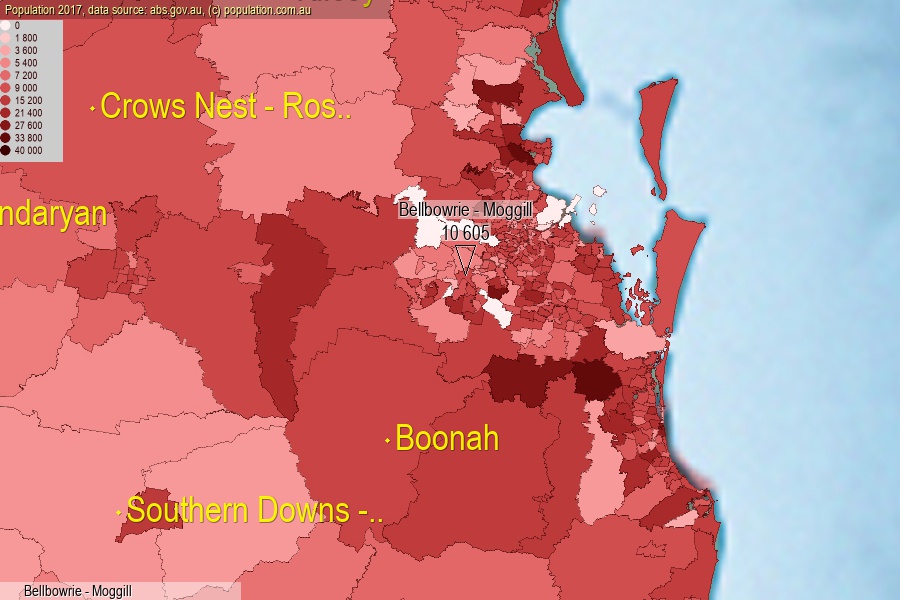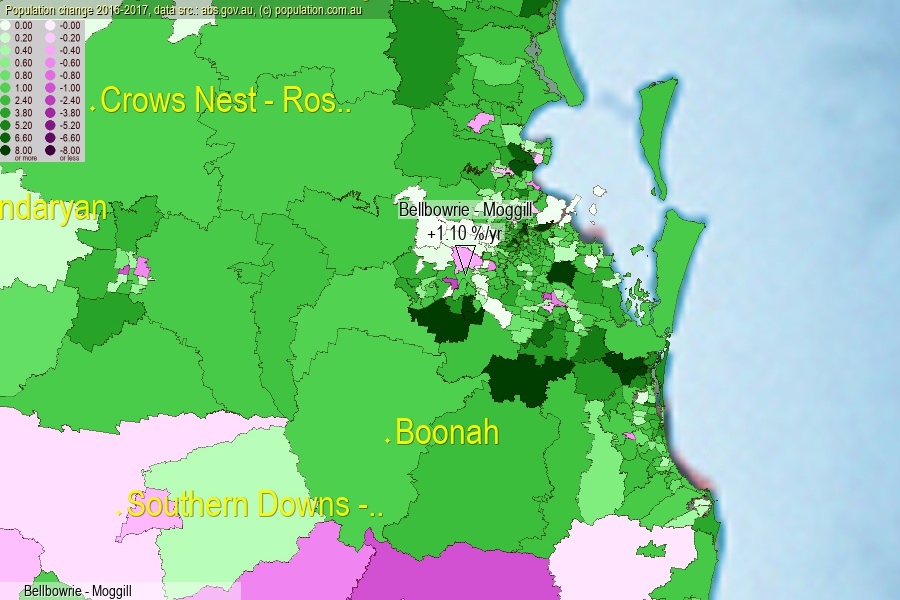 population.com.au
population.com.auLast official estimated population of Bellbowrie - Moggill (as Statistical Area Level 2) was 10 605 people (on 2017-06-30)[2]. This was 0.04% of total Australian population and 0.212% of QLD population. Area of Bellbowrie - Moggill is 17.40 km², in this year population density was 609.48 p/km² . If population growth rate would be same as in period 2016-2017 (+1.1%/yr), Bellbowrie - Moggill population in 2025 would be 11 572. [0]



Click to enlarge. Bellbowrie - Moggill is located in the center of the images.
Population [people], population density [p./km²] and population change [%/year] [2]
View borders » (new window) [4]
[1991-1992] +2.78 %/Yr.
[1992-1993] +4.21 %/Yr.
[1993-1994] +3.06 %/Yr.
[1994-1995] +2.09 %/Yr.
[1995-1996] +2.35 %/Yr.
[1996-1997] +6.82 %/Yr.
[1997-1998] +3.47 %/Yr.
[1998-1999] +4.36 %/Yr.
[1999-2000] +4.53 %/Yr.
[2000-2001] +3.92 %/Yr.
[2001-2002] +6.10 %/Yr.
[2002-2003] +4.48 %/Yr.
[2003-2004] +3.24 %/Yr.
[2004-2005] +7.07 %/Yr.
[2005-2006] +7.85 %/Yr.
[2006-2007] +6.87 %/Yr.
[2007-2008] +7.30 %/Yr.
[2008-2009] +6.83 %/Yr.
[2009-2010] +3.44 %/Yr.
[2010-2011] +1.41 %/Yr.
[2011-2012] +2.87 %/Yr.
[2012-2013] +3.30 %/Yr.
[2013-2014] +2.63 %/Yr.
[2014-2015] +1.17 %/Yr.
[2015-2016] +1.60 %/Yr.
[2016-2017] +1.10 %/Yr.
[0] Calculated with linear interpolation from officially estimated population
[1] Read more about SA2 and Australian Statistical Geography Standard (ASGS) on abs.gov.au
[2] Population data from Australian Bureau of Statistics (Population and density: 2017; change: 2016-2017)
[3] Digital Boundaries: Australian Statistical Geography Standard (ASGS) 2016.
[4] Border coordinates are simplifyed using Ramer-Douglas-Peucker algorithm.